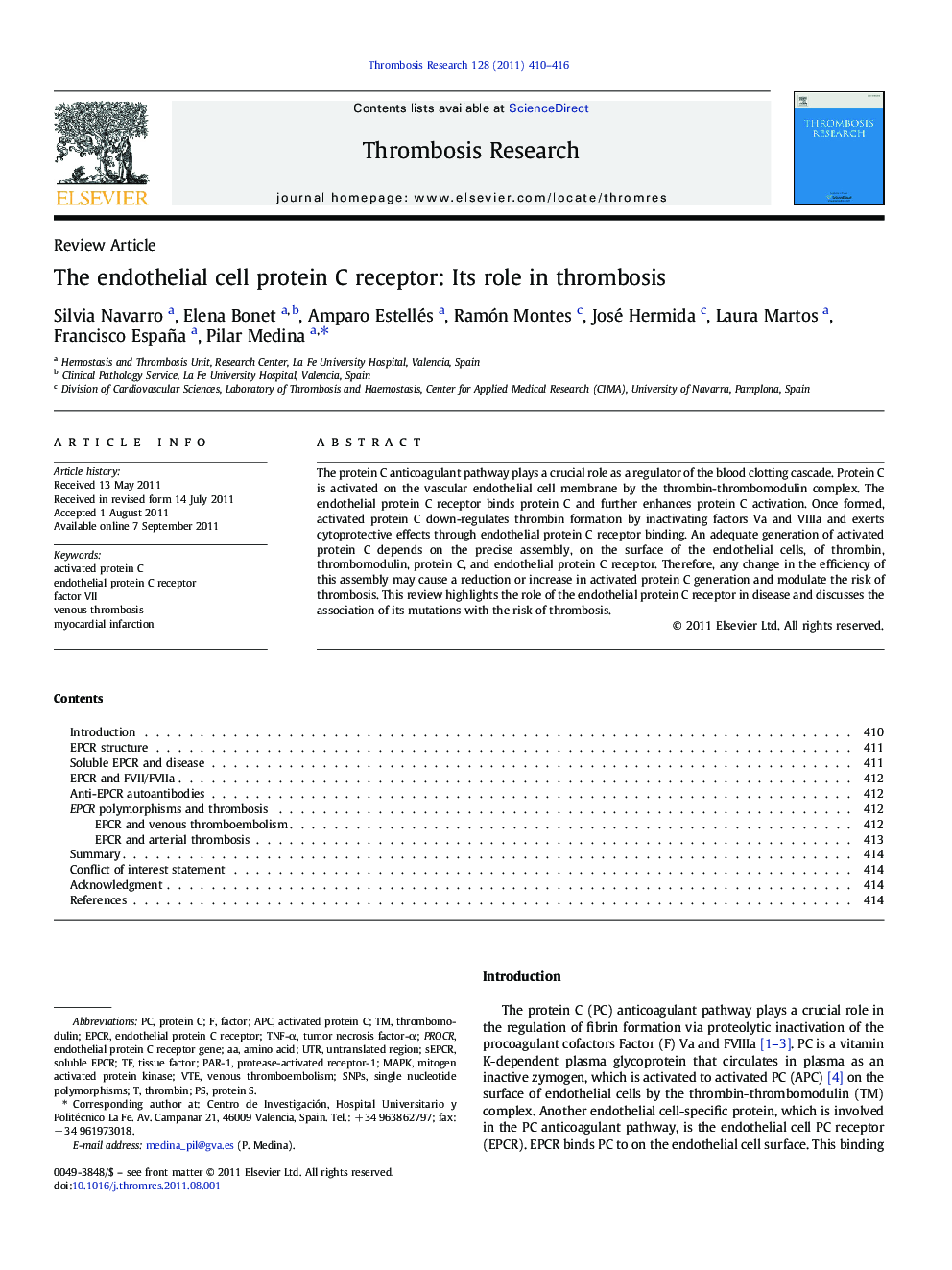| Article ID | Journal | Published Year | Pages | File Type |
|---|---|---|---|---|
| 3029046 | Thrombosis Research | 2011 | 7 Pages |
The protein C anticoagulant pathway plays a crucial role as a regulator of the blood clotting cascade. Protein C is activated on the vascular endothelial cell membrane by the thrombin-thrombomodulin complex. The endothelial protein C receptor binds protein C and further enhances protein C activation. Once formed, activated protein C down-regulates thrombin formation by inactivating factors Va and VIIIa and exerts cytoprotective effects through endothelial protein C receptor binding. An adequate generation of activated protein C depends on the precise assembly, on the surface of the endothelial cells, of thrombin, thrombomodulin, protein C, and endothelial protein C receptor. Therefore, any change in the efficiency of this assembly may cause a reduction or increase in activated protein C generation and modulate the risk of thrombosis. This review highlights the role of the endothelial protein C receptor in disease and discusses the association of its mutations with the risk of thrombosis.
